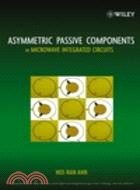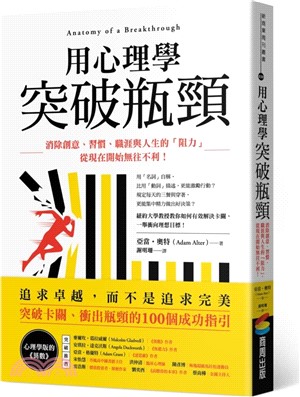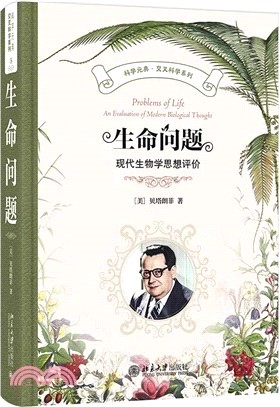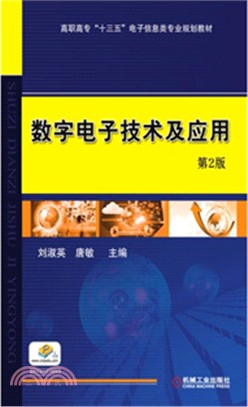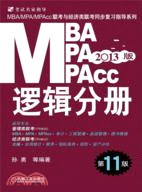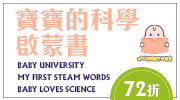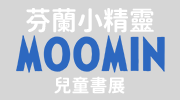Asymmetric Passive Components In Microwave Integrated Circuits
商品資訊
ISBN13:9780471737483
出版社:John Wiley & Sons Inc
作者:Ahn
出版日:2006/07/18
裝訂/頁數:平裝/308頁
定價
:NT$ 7484 元優惠價
:90 折 6736 元
若需訂購本書,請電洽客服 02-25006600[分機130、131]。
商品簡介
作者簡介
目次
商品簡介
This book examines the new and important technology of asymmetric passive components for miniaturized microwave passive circuits. The asymmetric design methods and ideas set forth by the author are groundbreaking and have not been treated in previous works. Readers discover how these design methods reduce the circuit size of microwave integrated circuits and are also critical to reducing the cost of equipment such as cellular phones, radars, antennas, automobiles, and robots.
An introductory chapter on the history of asymmetric passive components, which began with asymmetric ring hybrids first described by the author, sets the background for the book. It lays a solid foundation with a chapter examining microwave circuit parameters such as scattering, ABCD, impedance, admittance, and image. A valuable feature of this chapter is a conversion table between the various circuit matrices characterizing two-port networks terminated in arbitrary impedances. The correct conversion has also never been treated in previous works.
Next, the author sets forth a thorough treatment of asymmetric passive component design, which covers the basic and indispensable elements for integration with other active or passive devices, including:
* Asymmetric ring hybrids
* Asymmetric branch-line hybrids
* Asymmetric three-port power dividers and N-way power dividers
* Asymmetric ring hybrid phase shifters and attenuators
* Asymmetric ring filters and asymmetric impedance transformers
With its focus on the principles of circuit element design, this is a must-have graduate-level textbook for students in microwave engineering, as well as a reference for design engineers who want to learn the new and powerful design method for asymmetric passive components.
An introductory chapter on the history of asymmetric passive components, which began with asymmetric ring hybrids first described by the author, sets the background for the book. It lays a solid foundation with a chapter examining microwave circuit parameters such as scattering, ABCD, impedance, admittance, and image. A valuable feature of this chapter is a conversion table between the various circuit matrices characterizing two-port networks terminated in arbitrary impedances. The correct conversion has also never been treated in previous works.
Next, the author sets forth a thorough treatment of asymmetric passive component design, which covers the basic and indispensable elements for integration with other active or passive devices, including:
* Asymmetric ring hybrids
* Asymmetric branch-line hybrids
* Asymmetric three-port power dividers and N-way power dividers
* Asymmetric ring hybrid phase shifters and attenuators
* Asymmetric ring filters and asymmetric impedance transformers
With its focus on the principles of circuit element design, this is a must-have graduate-level textbook for students in microwave engineering, as well as a reference for design engineers who want to learn the new and powerful design method for asymmetric passive components.
作者簡介
HEE-RAN AHN, PhD, is a member of the Department of Electronics and Electrical Engineering at Pohang University of Science and Technology (POSTECH), Korea. Dr. Ahn is internationally recognized as a leader and innovator in asymmetric passive components such as ring and branch-line hybrids, power dividers, phase shifters, attenuators, and impedance transformers (CVTs and CCTs).
目次
Preface.
1. Introduction.
1.1 Asymmetric Passive Components.
1.2 Circuit Parameters.
1.3 Asymmetric Four-Port Hybrids.
1.4 Asymmetric Three-Port Power Dividers.
1.5 Asymmetric Two-Port Components.
References.
2. Circuit Parameters.
2.1 Scattering Matrix.
2.2 Scattering Parameters of Reduced Multiports.
2.3 Two-Port Network Analysis Using Scattering Parameters.
2.4 Other Circuit Parameters.
2.5 Analyses of Symmetric Networks.
2.6 Analyses with Image Parameters.
Exercises.
References.
3. Conventional Ring Hybrids.
3.1 Introduction.
3.2 Original Concept of the 3-dB Ring Hybrid.
3.3 Conventional Ring Hybrids.
3.4 Conventional 3-dB Uniplanar Ring Hybrids.
Exercises.
References.
4. Asymmetric Ring Hybrids.
4.1 Introduction.
4.2 Derivation of Design Equations of Asymmetric Ring Hybrids.
4.3 Small Asymmetric Ring Hybrids.
4.4 Wideband or Small Asymmetric Ring Hybrids.
4.5 Miniaturized Ring Hybrids Terminated in Arbitrary Impedances.
Exercises.
References.
5. Asymmetric Branch-Line Hybrids.
5.1 Introduction.
5.2 Origin of Branch-Line Hybrids.
5.3 Multisection Branch-Line Couplers.
5.4 Branch-Line Hybrids for Impedance Transforming.
5.5 Asymmetric Four-Port Hybrids.
Exercises.
References.
6. Conventional Three-Port Power Dividers.
6.1 Introduction.
6.2 Three-Port 3-dB Power Dividers.
6.3 Three-Port Power Dividers with Arbitrary Power Divisions.
6.4 Symmetric Analyses of Asymmetric Three-Port Power Dividers.
6.5 Three-Port 3-dB Power Dividers Terminated in Complex Frequency-Dependent Impedances.
6.6 Three-Port 45◦ Power Divider/Combiner.
Exercises.
References.
7. Three-Port 3-dB Power Dividers Terminated in Different Impedances.
7.1 Introduction.
7.2 Perfect Isolation Condition.
7.3 Analyses.
7.4 Scattering Parameters of Three-Port Power Dividers.
7.5 Lumped-Element Three-Port 3-dB Power Dividers.
7.6 Coplanar Three-Port 3-dB Power Dividers.
Exercises.
References.
8. General Design Equations for N-Way Arbitrary Power Dividers.
8.1 Introduction.
8.2 General Design Equations for Three-Port Power Dividers.
8.3 General Design Equations for N-Way Power Dividers.
Exercises.
References.
9. Asymmetric Ring-Hybrid Phase Shifters and Attenuators.
9.1 Introduction.
9.2 Scattering Parameters of Asymmetric Ring Hybrids.
9.3 Asymmetric Ring-Hybrid Phase Shifters.
9.4 Asymmetric Ring-Hybrid Attenuator with Phase Shifts.
Exercises.
References.
10. Ring Filters and Their Use in a New Measurement Technique for Inherent Ring-Resonance Frequency.
10.1 Introduction.
10.2 Ring Filters.
10.3 New Measurement Technique for Inherent Ring-Resonance Frequency.
10.4 Conclusions.
Exercises.
References.
11. Small Impedance Transformers, CVTs and CCTs, and Their Applications to Small Power Dividers and Ring Filters.
11.1 Small Transmission-Line Impedance Transformers.
11.2 Mathematical Approach for CVTs and CCTs.
11.3 CVT3PDs and CCT3PDs.
11.4 Asymmetric Three-Port 45◦ Power Divider Terminated in Arbitrary Impedances.
11.5 CVT and CCT Ring Filters.
11.5.1 Analyses of Ring Filters.
Exercises.
References.
Appendix A: Symbols and Abbreviations.
Appendix B: Conversion Matrices.
Appendix C: Derivation of the Elements of a Small Asymmetric Ring Hybrid.
Appendix D: Trigonometric Relations.
Appendix E: Hyperbolic Relations.
Index.
1. Introduction.
1.1 Asymmetric Passive Components.
1.2 Circuit Parameters.
1.3 Asymmetric Four-Port Hybrids.
1.4 Asymmetric Three-Port Power Dividers.
1.5 Asymmetric Two-Port Components.
References.
2. Circuit Parameters.
2.1 Scattering Matrix.
2.2 Scattering Parameters of Reduced Multiports.
2.3 Two-Port Network Analysis Using Scattering Parameters.
2.4 Other Circuit Parameters.
2.5 Analyses of Symmetric Networks.
2.6 Analyses with Image Parameters.
Exercises.
References.
3. Conventional Ring Hybrids.
3.1 Introduction.
3.2 Original Concept of the 3-dB Ring Hybrid.
3.3 Conventional Ring Hybrids.
3.4 Conventional 3-dB Uniplanar Ring Hybrids.
Exercises.
References.
4. Asymmetric Ring Hybrids.
4.1 Introduction.
4.2 Derivation of Design Equations of Asymmetric Ring Hybrids.
4.3 Small Asymmetric Ring Hybrids.
4.4 Wideband or Small Asymmetric Ring Hybrids.
4.5 Miniaturized Ring Hybrids Terminated in Arbitrary Impedances.
Exercises.
References.
5. Asymmetric Branch-Line Hybrids.
5.1 Introduction.
5.2 Origin of Branch-Line Hybrids.
5.3 Multisection Branch-Line Couplers.
5.4 Branch-Line Hybrids for Impedance Transforming.
5.5 Asymmetric Four-Port Hybrids.
Exercises.
References.
6. Conventional Three-Port Power Dividers.
6.1 Introduction.
6.2 Three-Port 3-dB Power Dividers.
6.3 Three-Port Power Dividers with Arbitrary Power Divisions.
6.4 Symmetric Analyses of Asymmetric Three-Port Power Dividers.
6.5 Three-Port 3-dB Power Dividers Terminated in Complex Frequency-Dependent Impedances.
6.6 Three-Port 45◦ Power Divider/Combiner.
Exercises.
References.
7. Three-Port 3-dB Power Dividers Terminated in Different Impedances.
7.1 Introduction.
7.2 Perfect Isolation Condition.
7.3 Analyses.
7.4 Scattering Parameters of Three-Port Power Dividers.
7.5 Lumped-Element Three-Port 3-dB Power Dividers.
7.6 Coplanar Three-Port 3-dB Power Dividers.
Exercises.
References.
8. General Design Equations for N-Way Arbitrary Power Dividers.
8.1 Introduction.
8.2 General Design Equations for Three-Port Power Dividers.
8.3 General Design Equations for N-Way Power Dividers.
Exercises.
References.
9. Asymmetric Ring-Hybrid Phase Shifters and Attenuators.
9.1 Introduction.
9.2 Scattering Parameters of Asymmetric Ring Hybrids.
9.3 Asymmetric Ring-Hybrid Phase Shifters.
9.4 Asymmetric Ring-Hybrid Attenuator with Phase Shifts.
Exercises.
References.
10. Ring Filters and Their Use in a New Measurement Technique for Inherent Ring-Resonance Frequency.
10.1 Introduction.
10.2 Ring Filters.
10.3 New Measurement Technique for Inherent Ring-Resonance Frequency.
10.4 Conclusions.
Exercises.
References.
11. Small Impedance Transformers, CVTs and CCTs, and Their Applications to Small Power Dividers and Ring Filters.
11.1 Small Transmission-Line Impedance Transformers.
11.2 Mathematical Approach for CVTs and CCTs.
11.3 CVT3PDs and CCT3PDs.
11.4 Asymmetric Three-Port 45◦ Power Divider Terminated in Arbitrary Impedances.
11.5 CVT and CCT Ring Filters.
11.5.1 Analyses of Ring Filters.
Exercises.
References.
Appendix A: Symbols and Abbreviations.
Appendix B: Conversion Matrices.
Appendix C: Derivation of the Elements of a Small Asymmetric Ring Hybrid.
Appendix D: Trigonometric Relations.
Appendix E: Hyperbolic Relations.
Index.
主題書展
更多
主題書展
更多書展今日66折
您曾經瀏覽過的商品
購物須知
外文書商品之書封,為出版社提供之樣本。實際出貨商品,以出版社所提供之現有版本為主。部份書籍,因出版社供應狀況特殊,匯率將依實際狀況做調整。
無庫存之商品,在您完成訂單程序之後,將以空運的方式為你下單調貨。為了縮短等待的時間,建議您將外文書與其他商品分開下單,以獲得最快的取貨速度,平均調貨時間為1~2個月。
為了保護您的權益,「三民網路書店」提供會員七日商品鑑賞期(收到商品為起始日)。
若要辦理退貨,請在商品鑑賞期內寄回,且商品必須是全新狀態與完整包裝(商品、附件、發票、隨貨贈品等)否則恕不接受退貨。

